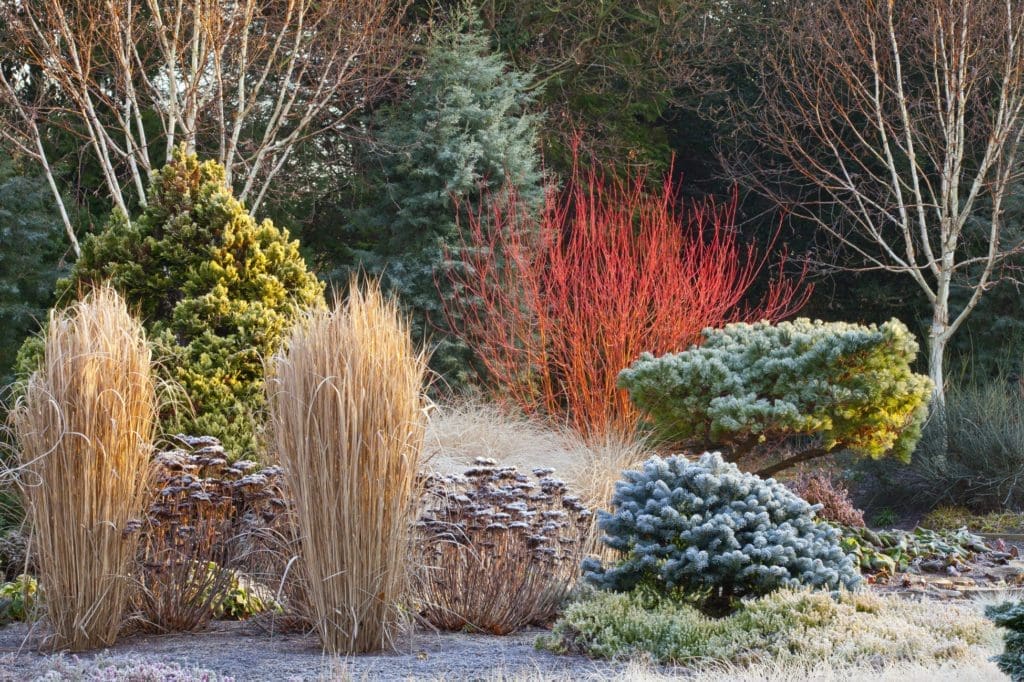11 EASY Tips for the Winter Gardener

While some consider January and February to be a gardener’s “off season,” there’s actually plenty to do for the horticulturally minded. Here are a few fun gardening activities to help get you through the cold days to come:
Force Bulbs Now!
If you have at least one sunny window, forcing bulbs is a great way to pass the cold days. Paperwhites (Narcissus sp.) and amaryllis are the easiest bulbs to force in winter, but you can also try minor bulbs like hyacinths, crocus, scilla, grape hyacinth, and lily of the valley. Just pot them in growing medium and keep evenly moist in well-drained soil (as standing water can rot the bulb). Then sit back and wait for the mid-winter, or early spring, show!
Read Seed Catalogs
Sitting by the fire with the latest gardening catalogs and with a cup of tea is a time-honored winter activity for gardeners. There, you can peruse the hundreds of new veggie and plant varieties for the 2017 growing season. With a few catalogs at the ready, winter becomes a time for dreaming and hoping.
Plan Your Garden
Grab a pencil and paper and actually draw a bird’s-eye view of your garden. You can mark where plants are currently located and where you want to put new showstoppers. It’s a great exercise for the creatively minded.
Houseplants
There are plenty of houseplants that can provide you with color and texture right now. Some easy specimens include geraniums (Pelargonium sp.), crown of the thorns (Euphorbia milii), begonias, streptocarpus, cyclamen, African violets, and countless types of cacti and succulents.
If you dug up any clumps of Impatiens or Coleus last fall, you know how good they look in warm, sunny spot in the home. Lastly, treat yourself to a nice orchid—the genus Phalaenopsis is one that can bloom for months, with minimal care.
Join a Garden Club or Horticultural Institution
Garden clubs are a great way to connect with plant lovers in your immediate area. Gardening institutions also abound in the Philadelphia area—we’re not known as The Mecca of American Horticulture for nothing—and there are many choices for membership and volunteer opportunities, if you want to get involved.
Visit a Nursery
While many garden centers have been replaced by bland, big-box home stores, there are still wonderful nurseries out there—and they’re usually open in the winter. Stop by and check out houseplants, seeds, tools, and more. Nothing will get you in the mood for Spring faster than a rejuvenating visit to the local nursery!
Become a Garden Artist
Drawing and painting is a fine way to express your love of horticulture. There are often classes offered through local arts centers, or just work at home at your own pace. Whether a landscape or a detailed botanical close-up, creating garden art works wonders for the soul.
Go Online
Surf the Internet to find zillions of garden pages and fellow planters to chat with. Facebook alone sports a million horticultural Pages and Groups to join, connecting you with a wide-world of green-thumbers just like you.
Clean Your Tools
Maybe not the most exciting job, but a necessary one. Keep your shovels, forks, clippers, and trowels in shape by making sure they’re clean and any moving parts are well-oiled. Another trick is to buy bright-orange spray paint and paint the handles. That way, when you’re working outside and lay a tool on the ground, you’ll be able to find it in a jiffy.
Think a Year Out
One of the hardest tasks for the gardener is thinking into the future. Sure, we all want instant gratification, but it’s also important to think about plants that will look terrific next Fall and Winter, delivering that vaunted “cold-season interest” to the garden. There are many trees and shrubs that look impressive during the cold months—and the proper time to plant them will be this Spring. Trust us, it’s always worth the effort.
Go for a Walk
This is probably the best thing any gardener can do—put on your coat and hat and go for a walk. While your instincts may tell you to stay indoors where it’s warm ‘n’ cozy, there is plenty of fascinating plant action right now, even on your neighbors’ front lawn. Certain azaleas may sport vivid leaf colors and textures, while shrubs like Witch Hazel, Winter Hazel, and Edgeworthia will soon be at their ornament peak. Red-twig, yellow-twig, and flame-twig dogwoods all look spectacular right now.
Also look for interesting, “exfoliating” types of tree barks (like Paperbark Maple, Acer griseum), ornamental grasses, various mosses and lichens, and the purple stalks of the native wild raspberry (Rubus occidentalis).
As most experienced gardeners will tell you, there is always something beautiful to see outdoors—and Winter is one of the most fascinating seasons of them all.


